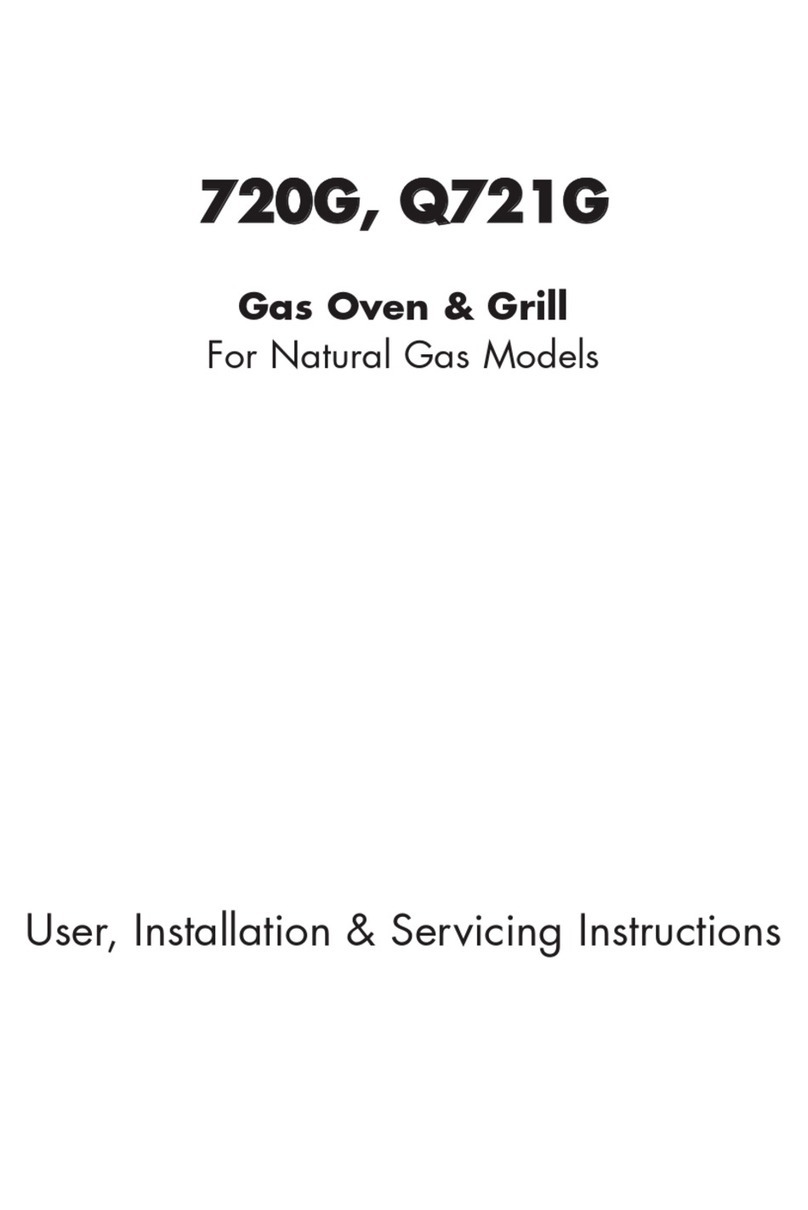INTRODUCTION
Thank you for choosing a
British built appliance by Stoves
We hope that the following information
will help you to quickly familiarise
yourself with the features of the following
appliance, and use it successfully and
safely.
Our policy is one of constant
development and improvement. Strict
accuracy of illustrations and specifications
is not guaranteed. Modification to
design and materials may be
necessary subsequent to publication.
This appliance must be installed in
accordance with the regulations in
force and only in a well ventilated
space. Read the instructions before
using or installing this appliance.
Your 1st Year Guarantee
To fulfil the conditions of your guarantee,
this appliance must be correctly
installed and operated, in accordance
with these instructions, and only be
used for normal domestic purposes.
Please note that the guarantee, and
Service availability, only apply to the
UK and Republic of Ireland.
Before using the appliance for
the first time, remove any protective
polythene film and wash the oven
shelves in hot soapy water to remove
their protective covering of oil. Even
so, when you first switch on the oven
or grill you may notice a smell and
some smoke.
Gas & Electrical connections
Please refer to the ‘Installation
Instructions’ for the Gas and Electrical
Safety Regulations, and the Ventilation
Requirements.
The appliance must be installed (and
serviced) by a Corgi registered approved
installer or a person competent to ensure
that the installation is in accordance
with “The Gas Safety (Installation & Use)
Regulations 1994”, & the “The Gas
Safety (Installation & Use) (Amendment)
Regulations 1996”. Failure to comply with
these Regulations is a criminal offence.
Warning: This appliance must be
earthed.
The Gas Consumer Council (GCC) is
an independent organisation which
protects the interests of gas users. If
you need advice, you will find the
telephone number in your local
telephone directory under Gas.
Condensation
When hot and cold air meet,
condensation forms. The outer door is
air cooled and the inner door gets hot,
so some condensation might form; this
is normal and will disappear within
10 - 15 minutes.
The appliance is designed to fit into a
standard 600 mm wide housing unit
with a minimum internal height of
880 mm.
2































